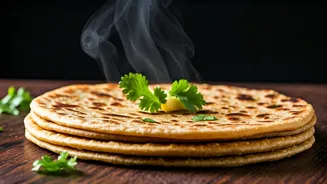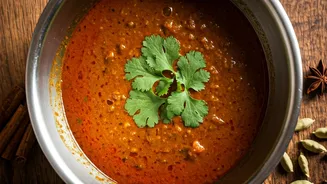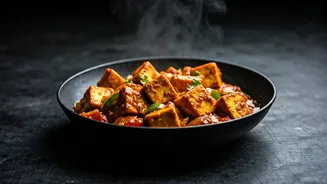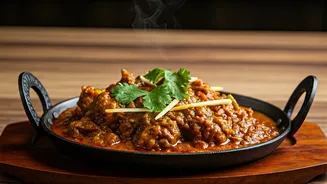Dough Preparation Essentials
The foundation of an excellent Aloo Paratha lies in its dough. Start with high-quality wheat flour (atta), known for its ability to create a pliable dough. Sift
the flour to eliminate any lumps, then gradually add water, kneading continuously. The aim is to create a soft, supple dough that isn't too sticky. A pinch of salt is crucial for enhancing the flavors. Some recipes call for a touch of oil or ghee to improve the texture, creating a softer paratha. Knead the dough for approximately 5-7 minutes until it becomes smooth. Let the dough rest for about 20-30 minutes, covered with a damp cloth. This allows the gluten to relax, which is essential to the soft texture. A well-rested dough will result in parathas that are easy to roll out and won't tear easily. Adding the right amount of water and resting the dough are two of the most critical aspects of this process, ensuring that the paratha will be just right.
The Aloo Filling Recipe
The filling is the star of the Aloo Paratha show. Begin by boiling the potatoes until they are soft, ensuring they are not overcooked, which can make the filling too mushy. Once cooled, peel and mash the potatoes thoroughly. In a pan, sauté finely chopped onions, green chilies (adjust to your spice preference), and ginger in a little oil. Sauté until the onions turn translucent. Add the mashed potatoes to the pan and mix well, incorporating the sautéed mixture. Now, comes the flavour profile: add spices like red chili powder, turmeric powder, coriander powder, and garam masala for that authentic taste. Fresh coriander leaves add a burst of freshness. Mix everything thoroughly and taste the filling, adjusting the seasoning as needed. The filling should be flavorful but not overly spicy. The consistency should be dry enough to prevent it from leaking from the paratha. Some people include finely crumbled paneer for richness. Once the filling is ready, let it cool down slightly.
Paratha Shaping Secrets
Shaping the Aloo Paratha requires a bit of skill, but with practice, it becomes easy. Divide the dough into equal-sized balls. Roll each ball into a small circle using a rolling pin on a lightly floured surface. Take a portion of the potato filling, and place it in the center of the rolled-out dough circle. Carefully bring the edges of the dough together, sealing the filling inside, ensuring that there are no holes. Gently flatten the filled dough ball. Now, roll it out evenly into a paratha, being careful not to apply too much pressure or roll too thin, or it could tear. If the paratha is sticking to the rolling surface, lightly dust it with flour. The paratha should be circular, but the shape doesn't need to be perfect. Aim for about 6-8 inches in diameter. The thickness of the paratha is key – it should be thick enough to hold the filling without bursting. Too thin, and it will become crispy. After several attempts, one becomes adept at creating the perfect shape.
Cooking on the Tawa
Now, the moment of truth: the cooking. Heat a flat griddle or tawa on medium heat. Once the tawa is hot, gently place the rolled-out Aloo Paratha on it. Let it cook for about a minute or until small bubbles start to appear on the surface. Flip the paratha and lightly brush the top with ghee or oil. Cook the other side for another minute and flip it again. Press the paratha gently with a spatula, ensuring even cooking and allowing it to puff up. Continue to cook, flipping frequently, and brushing with more ghee or oil until both sides are golden brown and cooked through. The paratha should be crisp on the outside and soft and fluffy inside. Each flip is vital to the final texture. This technique ensures that the paratha is cooked evenly without burning. Repeat this process for all the parathas, adding more ghee or oil as needed to prevent sticking and add flavor. Practice makes perfect – the more parathas you cook, the better you'll become at judging the heat and cooking time.
Serving and Variations
Serve the hot Aloo Parathas immediately. They taste best when fresh off the tawa. Serve them with accompaniments like plain curd, butter, pickle, and a cup of hot tea. Aloo Parathas are a complete meal. You can customize the filling. Add grated cauliflower (gobi), radish (mooli), or even mix vegetables to the potato filling. For a different taste, include grated cheese or paneer. You can also experiment with different spices. Some people like to include a pinch of asafoetida (hing) in the filling. To prevent sticking, you can dust the paratha with a little dry flour before placing it on the tawa. When serving, a dollop of butter on top of the paratha adds an extra layer of richness. Aloo Parathas can be a perfect dish for breakfast, lunch, or even dinner. Experimenting with different ingredients and flavors can lead to delightful culinary experiences.





